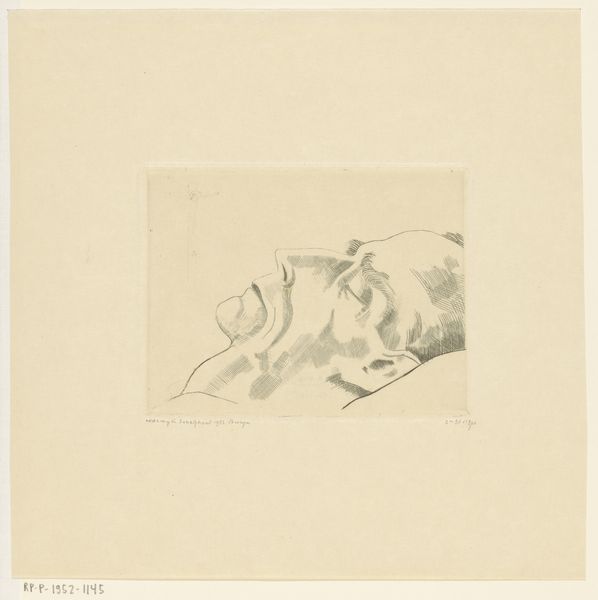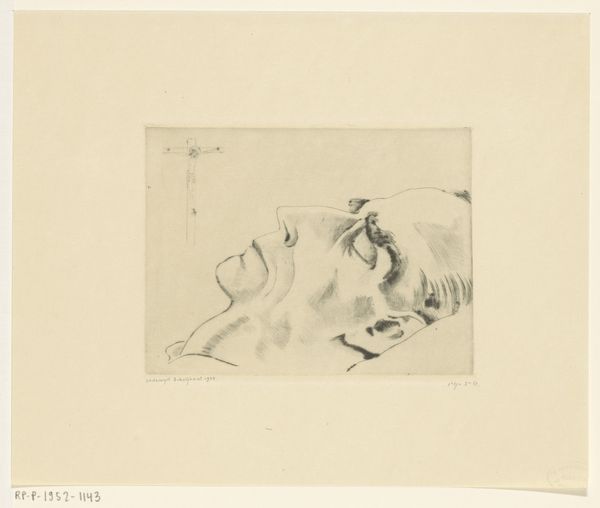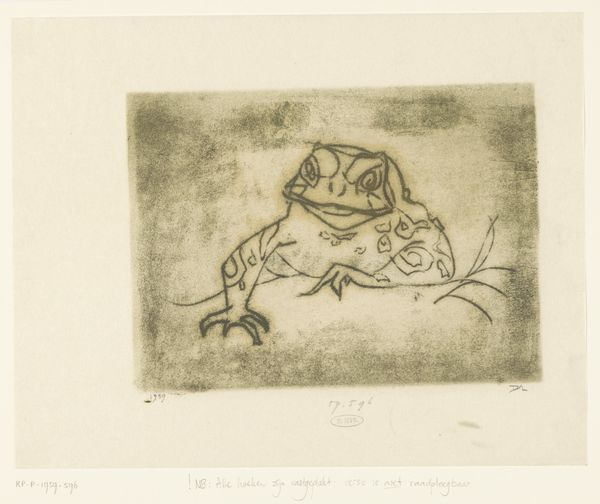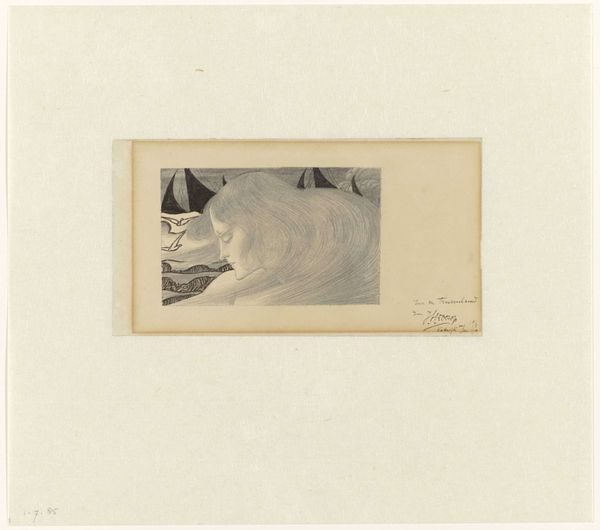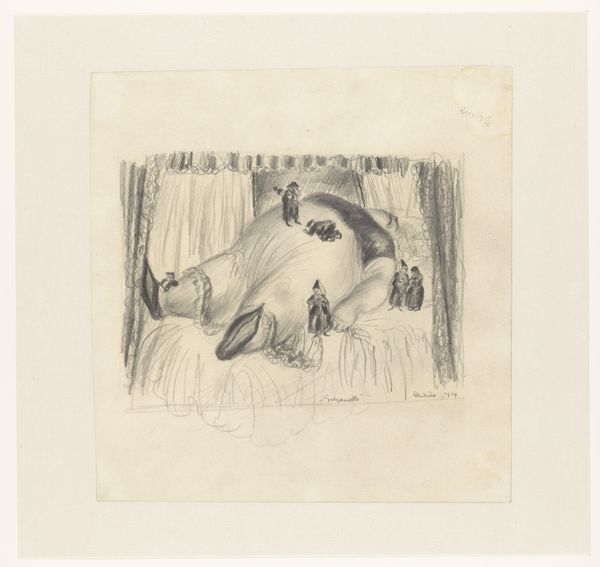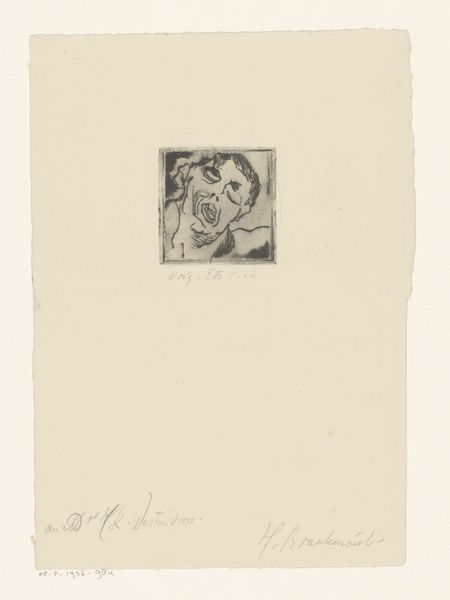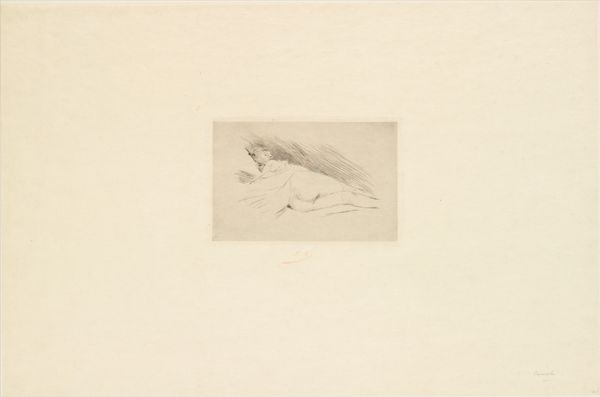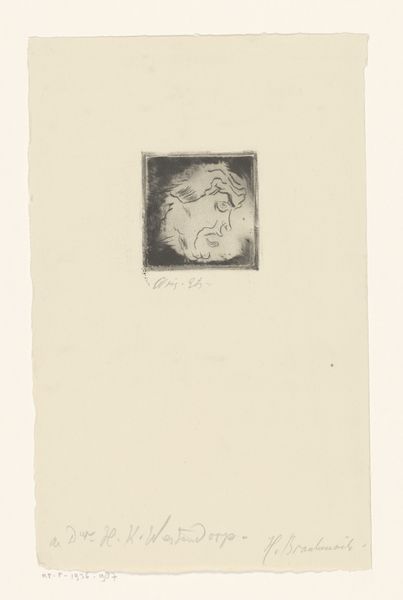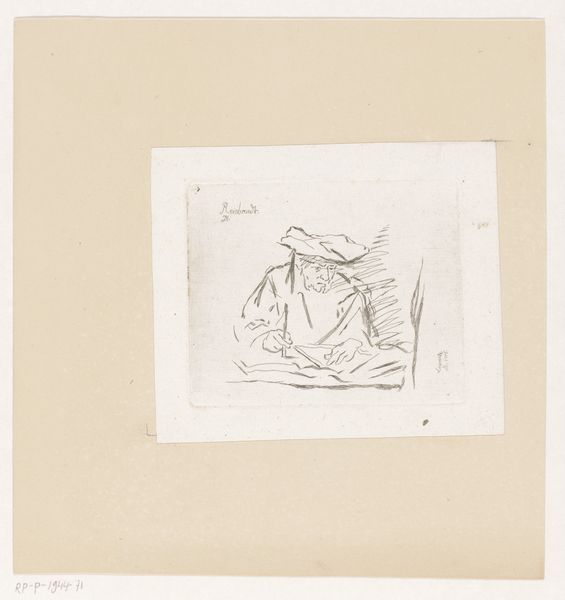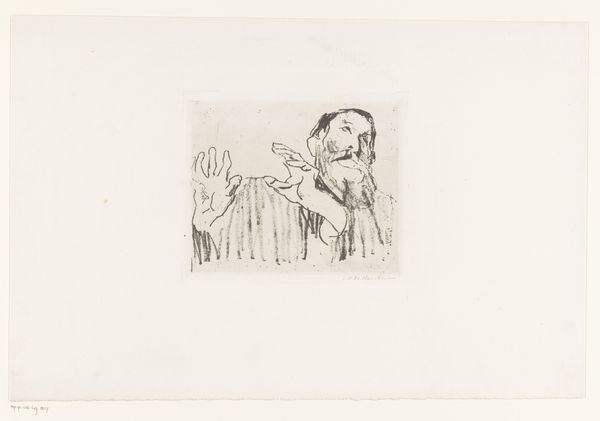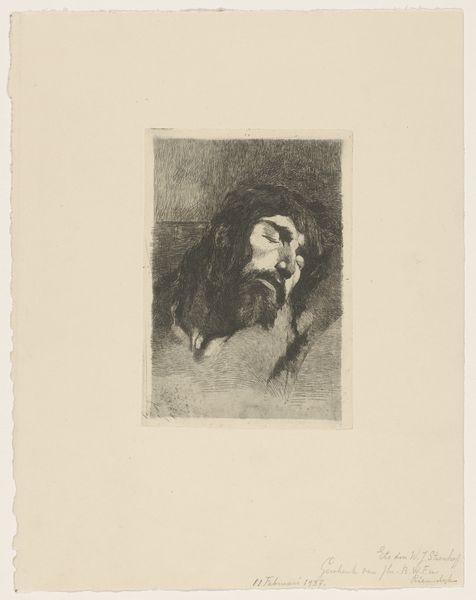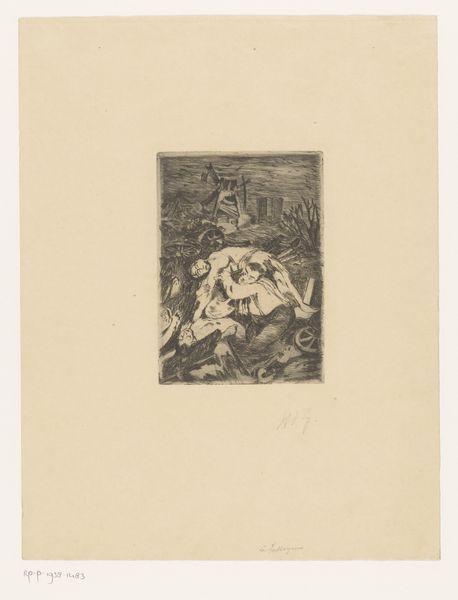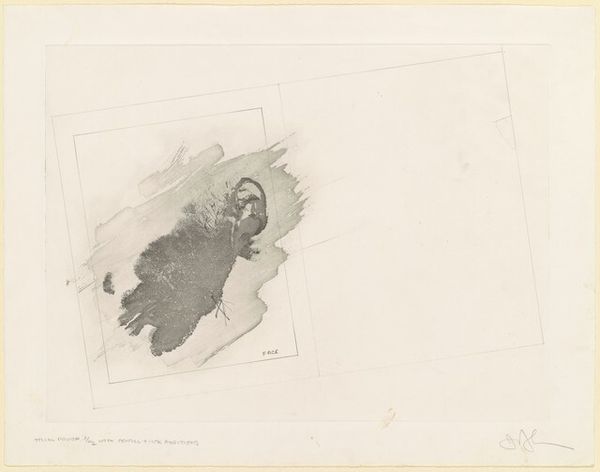
drawing, pencil
#
portrait
#
drawing
#
pencil
#
realism
Dimensions: height 109 mm, width 140 mm
Copyright: Rijks Museum: Open Domain
Curator: This is Auguste Danse's "Post-mortem portrait of Bruno Marie Nicolas Edmond Picard," created in 1871 using pencil on paper. It's such a poignant image; I'm struck by the child's serene expression, despite the context. What are your initial thoughts? Editor: I noticed how peacefully he appears to be sleeping. How do you interpret this work, especially given the time it was created? Curator: Well, the prevalence of post-mortem photography and portraiture in the Victorian era speaks volumes about societal attitudes toward death and remembrance. This image, in its stillness, memorializes the child, but it also reveals certain social truths. Death, particularly child mortality, was ever present in that era. These images functioned almost as a way to exert control, to fix and hold on to a memory in the face of so much loss. Editor: So, the portrait isn't just a record, but also a statement about loss and control? Curator: Precisely! And beyond the memorial aspect, what does it suggest about visibility, representation, and perhaps even exploitation surrounding children who died in that era? We can even explore how those representations affect current views of children and mourning. How might such a public expression of grief influence later generations, shaping societal and familial ideas? Editor: That's a powerful point. I hadn't considered the ethical implications of showcasing a deceased child's portrait like that. Curator: Right? It’s uncomfortable, and it should be. What’s especially poignant here is the use of drawing with pencil. In a time when photography was on the rise, and often employed for similar purposes, what statement is the artist making by instead embracing this more intimate form of creation? What is added, and what is lost? Editor: Wow, thinking about it through that lens opens up a whole new dialogue about grief and how we deal with it, both then and now. Thanks for the insights. Curator: Of course! It’s by grappling with these difficult questions that we start to understand how art reflects and shapes our world.
Comments
No comments
Be the first to comment and join the conversation on the ultimate creative platform.
